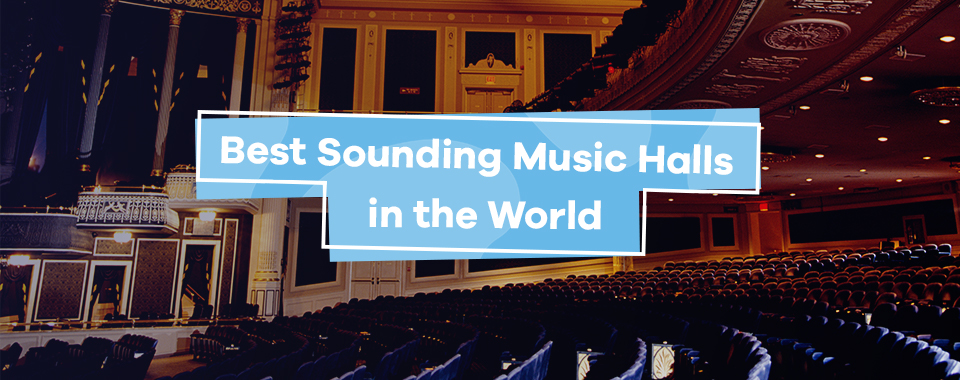
When you think of performances from world-renowned musicians, you may picture concert halls with extravagant architecture and a vast amphitheater concourse filled with listeners clinging to the edge of their seats with every note. In the theaters considered to be the best music halls in the world, there’s a certain connection forged between performers and audiences that simply can’t be replicated – as if some intangible force unites us around the sounds we experience, drawing us back time and time again.
The world’s most famous concert halls have garnered their esteem for a reason. Each venue performers and listeners consider to be among the best concert halls in the world is intricately and uniquely designed to enhance sound and amplify our collective resonance with it. Check out five of the best-sounding concert halls in the world — and a few of the key soundproofing features that distinguish them from the rest.
1. Musikverein in Vienna, Austria: 1744 Seats
Regarded by many as the best concert hall in the world, Musikverein’s modest size and shoebox shape result in stunning sound quality. This classic hall opened in 1870. It has a high ceiling and plaster interior for lengthy reverberation, and its irregular interior surfaces trap just the right amount of sound.
2. Symphony Hall in Boston: 2625 Seats
Built in 1900 and implementing a similar shoebox design strategy as Musikverein, this theater is often considered to be the best in the United States. It is built with brick, steel and plaster along with wooden floorboards. Its coffered ceiling and numerous statues create irregularity to balance reflecting and absorbing sound, and its shallow balconies prevent any reverberations from becoming muffled.
3. Teatro Colón in Buenos Aires, Argentina: 2487 Seats
Another century-old classic, this South American wonder opened its doors in 1908. To this day, it captures sound with its horseshoe-shaped auditorium and balances levels with heavy tapestries, carpets and curtains. From the ceiling hangs an impressive 700 bulb chandelier.
4. Tokyo Opera City Concert Hall in Japan: 1632 Seats
One of the modern greats, this concert hall opened in 1997. This shoebox variant differentiates itself with a 91-foot vaulted ceiling and a sound-redirecting canopy just above the stage. An uncommon feature in Japan, its wooden interior is double-layered to reduce the material’s bass-absorption effects. Designers also limited seat cushioning for the same reason.
5. Philharmonie de Paris, France: 2400 Seats
Paris’s newest world-class concert hall, which opened in 2015, unfolds around its stage. No audience member is ever more than 30 yards from the conductor. By alternating moving reflective panels and absorptive surfaces as the theater ascends, the Philharmonie perfectly disperses acoustics throughout the concourse.
Design Your Home Studio With Soundproof Cow
While the average home won’t be able to achieve the prestige of these world-famous concert halls, there’s a lot you can do to improve your household acoustics on a reasonable budget. At Soundproof Cow, we offer acoustic panels and other materials that will enhance your property’s noise-reduction qualities using tried-and-true principles. Browse our soundproofing materials online — and to learn more about our solutions, give us a call at 1-866-949-9269 or fill out a contact form today.






